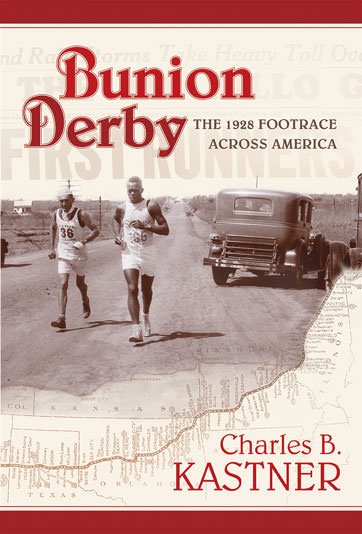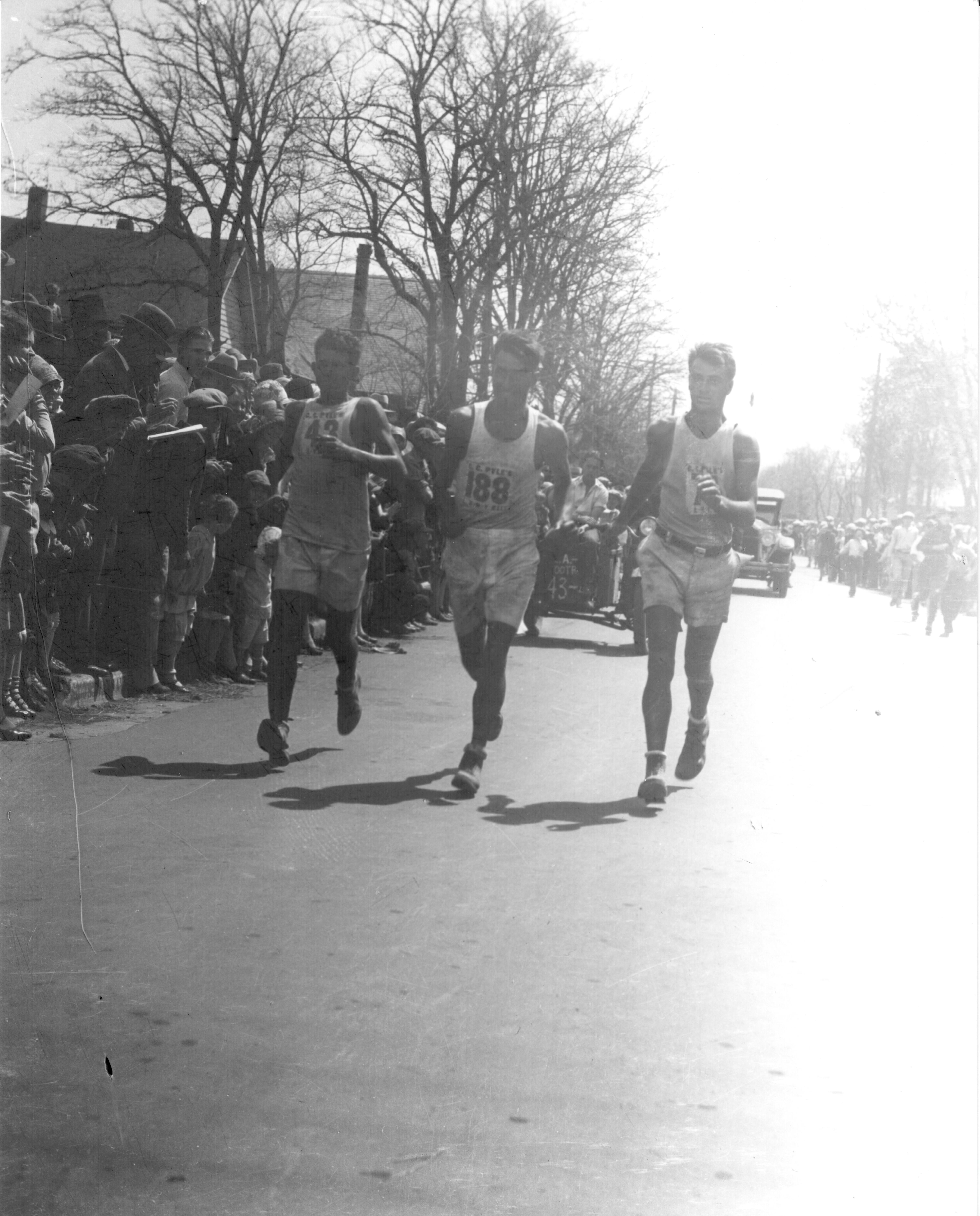Books
Albuquerque, New Mexico 87106 Buy from Amazon.com Buy Audiobook from University Press Audio Buy from Indiebound.org
In 2007, I published my book about the 1928 bunion derby. On page 94, I included a photo with the following heading: “Left to right, Andy Payne, #43, Patrick De Marr, #188, and Bill Kerr #7 finishing in El Reno, Oklahoma.”
The runner on the right is actually Louis Perrella, #74. The number 4 is mostly covered by his hand. His granddaughter contacted me and let me know that I had mislabeled the photo. So, I’m setting the record straight.
Louis Perrella was an iron tough bunioneer who came on strong in the last month of the race to finish in 7th place and took home $1000 in prize money.
Bunion Derby
The 1928 Footrace across America
On March 4, 1928, 199 men lined up in Los Angeles, California, to participate in a 3,400-mile trans-continental footrace to New York City. The Bunion Derby, as the press dubbed the event, was the brainchild of sports promoter Charles C. Pyle. He promised a $25,000 grand prize and claimed the competition would immortalize U.S. Highway Route 66, a 2,400-mile road, mostly unpaved that subjected the runners to mountains, deserts, mud, and sandstorms, from Los Angeles to Chicago.
The runners represented all walks of life, from immigrants to millionaires, with a peppering of star international athletes who Pyle included for publicity purposes. For eighty-four days, the men competed in this part footrace and part Hollywood production that included a road show featuring football legend Red Grange, food concessions, vaudeville acts, sideshows, a portable radio station, and the world’s largest coffeepot, sponsored by Maxwell House, serving ninety gallons of coffee a day.
Drawn by hopes of a better future and dreams of fame, fortune, and glory, the bunioneers embarked on and exhaustive and grueling journey that challenged their physical and psychological endurance to the fullest while Pyle struggled to keep his cross-country road show afloat.
Louis Perrella, #74 (right)

